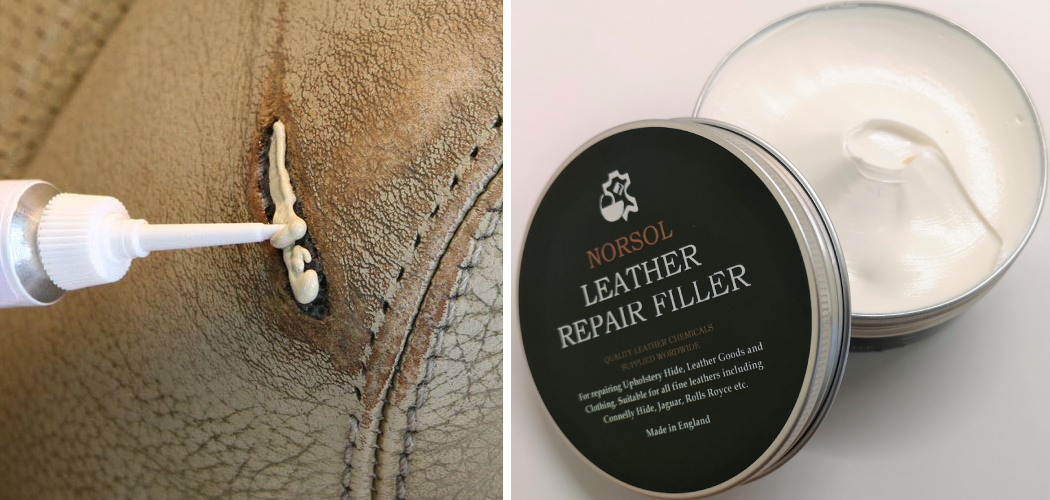Leather is a timeless material used for clothing, furniture, and accessories. Its long-lasting durability makes it an ideal choice for many products. However, over time leather can become damaged from wear and tear or spills. To help repair any damage, the leather filler can be used to restore the original look of the leather item.
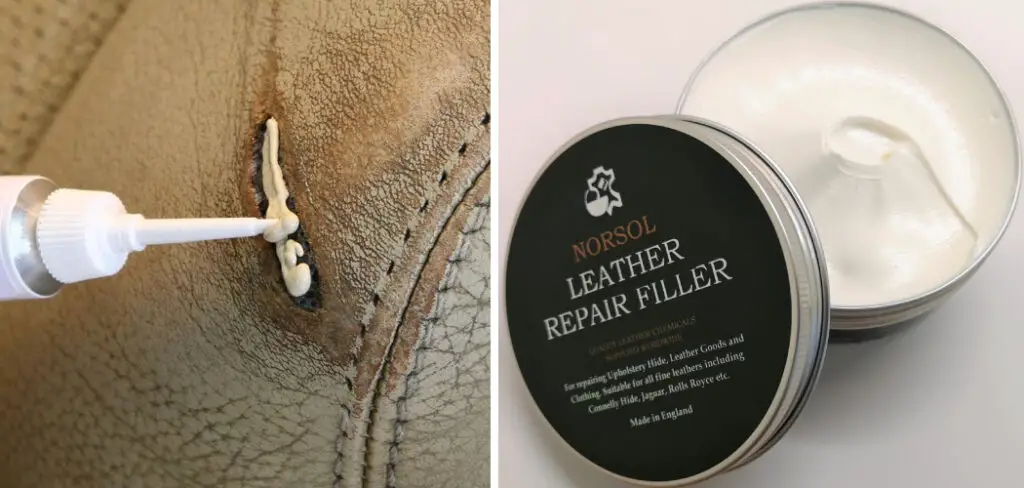
Leather filler is a compound made with wax, natural oils, and other ingredients that helps to repair cracks and scratches on the surface of leather. It can also be used to fill in gaps where color has faded due to wear and tear over time.
The benefits of using leather filler are twofold: it will restore the aesthetic appearance of your leather item and help protect the material from further damage. In this blog post, You will learn how to use leather filler in detail.
Step by Step Processes for How to Use Leather Filler
Step 1: Clean the Leather Surface
Before applying any form of leather filler, it is important to ensure that the surface area is free from dirt and debris. Use a cloth and mild cleaning solution to wipe down the entire area.
Step 2: Prepare Leather Filler
Read instructions carefully, as different brands may have their own forms of recommendations or preparation, such as mixing ratios and the amount of time to wait before applying. Depending on the size and area of the leather, select an appropriate tool, such as a brush or roller, for even application. Ensure that all bristles are free from dirt and debris.
Step 3: Apply Leather Filler in a Thin Layer
Begin by applying a thin layer of the leather filler onto the area. Make sure to cover all cracks and crevices evenly with consistent pressure. Let the filler set for the recommended amount of time as indicated by brand instructions. Do not exceed this time period, or you may risk damaging your leather.
Step 4: Wipe Away Excess Filler
Use a slightly damp cloth and wipe away any excess filler. This will prevent the leather from becoming too thick or uneven. If needed, apply another thin layer of the leather filler to ensure that all cracks and crevices are filled in.
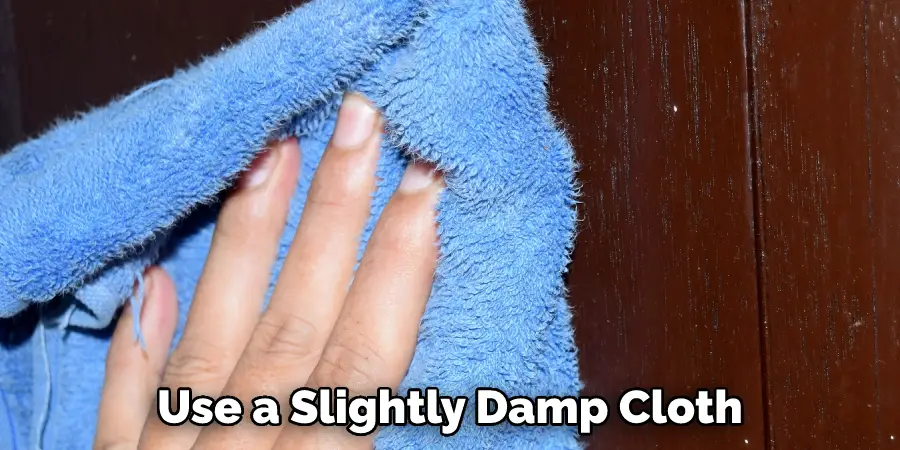
Step 5: Allow Time to Dry
Once the second layer has been applied, allow it to dry for the recommended amount of time. Do not exceed this time period, or you may risk damaging the leather.
Step 6: Sand Down Leather
Use fine-grade sandpaper and gently sand down the entire area until it is smooth. Be sure to use small circular motions and avoid pressing too hard.
The goal is to create an even surface that will accept the leather filler. By using a putty knife, apply a thin layer of the leather filler to the damaged area. Start in one corner and spread it evenly across the entire area.
Tips for How to Use Leather Filler
- Read the manufacturer’s instructions before use, as some products may require special handling or mixing of components.
- Use goggles, gloves, and a dust mask to protect you
- r eyes, skin, and lungs when working with leather filler.
- Always work in a well-ventilated space – open windows and/or use a fan.
- Use leather filler in an area with low humidity – too much moisture can cause the product to become less effective and may even lead to mold or mildew growth.
- Wear old clothes when working with leather filler, as it has strong odors and can stain clothing.
- If you are using a solvent-based filler, ensure it is in a closed container and away from open flame or sparks.
- Ensure that the surface of the leather is clean before applying the leather filler – dirt can affect how well the product works and may lead to uneven patches on your project.
- Apply the leather filler with a putty knife, working in small sections and allowing it to dry thoroughly before continuing.
- Test the leather filler on a scrap piece of material or an inconspicuous spot of your project before applying it over the entire area.
How Do You Sand and Finish the Repaired Area Once It Has Dried?
Once the leather filler is completely dry, you will need to sand it down to ensure the repair is flush with the rest of the leather surface. Use fine-grit sandpaper and gently begin sanding in circular motions. Make sure that all areas have been evenly sanded, and then clean the area with a damp cloth.
You Can Check It Out to Braid a Leather Get Back Whip
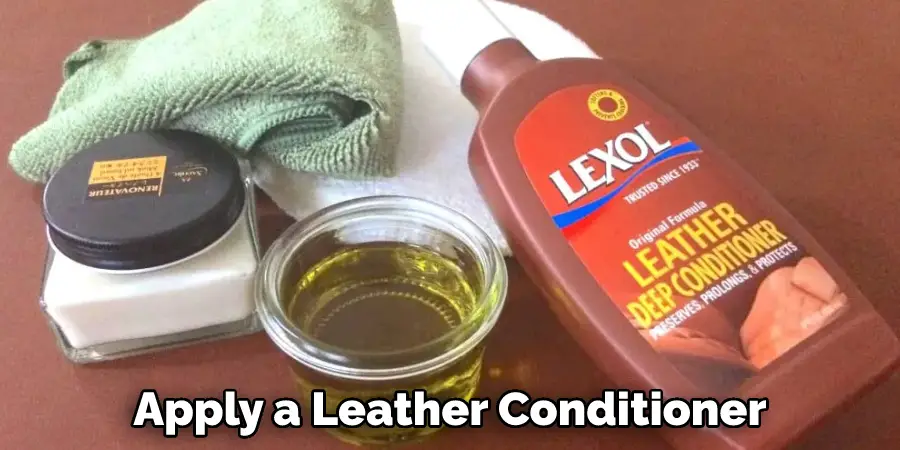
Once the repair is smooth, you can apply a leather conditioner to nourish and protect the repaired area. You may also want to use a sealant or finish such as beeswax, mink oil, or neatsfoot oil. These products will help protect the leather from water damage, stains, and cracking. Once the sealant or finish is applied, you can further protect the repair with a leather protector spray.
How Should You Care for the Leather Item After the Repair is Complete?
Once the leather item is repaired with the filler, it’s important to care for it properly. Leather protectors or conditioners should always be applied after the repair. This will help protect the leather and keep it looking great over time. It is also advised not to expose your leather items to direct sunlight or heat, which can cause damage.
Additionally, be sure to keep your leather items away from sources of moisture such as rain or high humidity. This can lead to mildew and mold forming on the item. Your leather repair will last for years and look great with proper care.
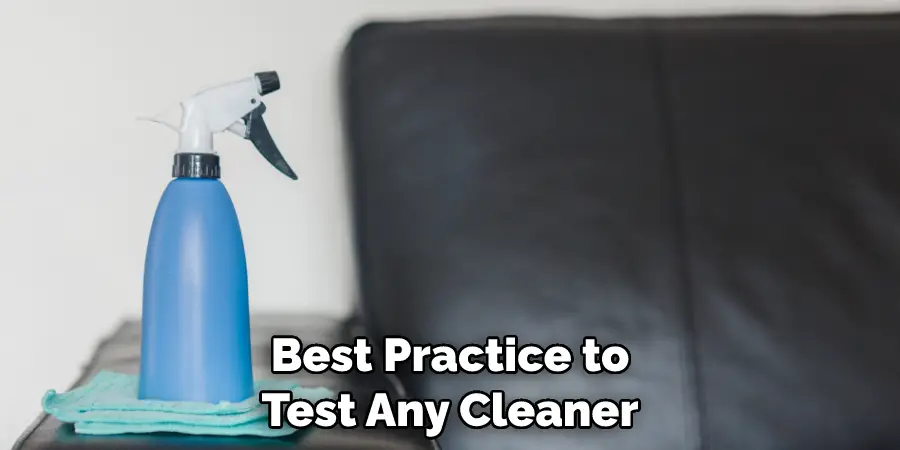
It is also best practice to test any cleaner or conditioner you plan to use before applying it to the leather item. This will help ensure that the product does not damage or discolor your item. If you’re unsure which product to use, it is best to contact a professional for advice. With proper care and cleaning, your leather repair will look great for years to come.
How Can You Clean Any Excess Filler or Residue From the Leather Surface?
Once you’ve filled any cracks in your leather and allowed the filler to dry, it’s time to start cleaning up the surface of your leather. You can use a soft cloth to wipe away any excess filler or residue that may have been left behind on the leather.
Be sure to be gentle as you wipe away the residue so that you don’t damage the leather. Once clean, you can apply a conditioner or protectant to help keep your leather in good shape for years to come.
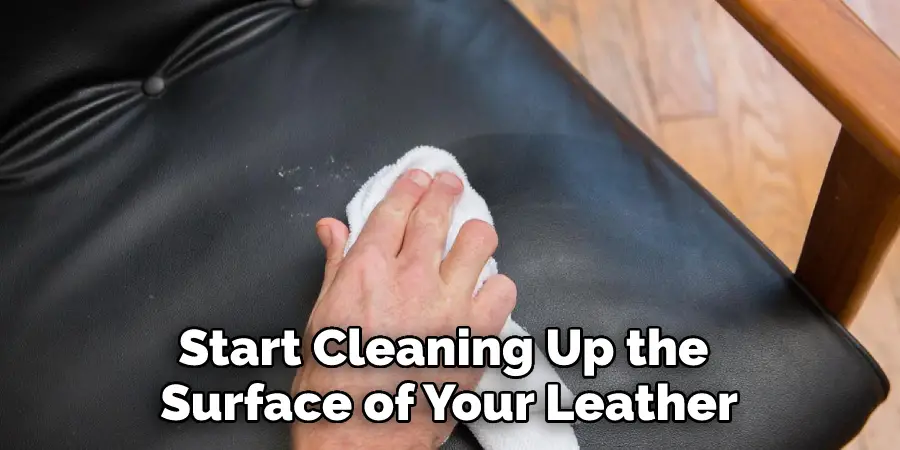
If there are still any rough patches on the surface of your leather from where the filler was applied, you can use fine-grain sandpaper followed by a soft cloth to buff away any leftover residue. This will help to restore the look of your leather and make it look as good as new.
If you’re uncomfortable tackling this project yourself, some professionals specialize in leather repair and maintenance that can handle the job for you. They have access to specialized tools and products that will ensure a perfect result every time.
How Can You Prevent Future Damage to Your Leather Item?
In addition to using leather filler to repair minor damages, there are a few preventive measures that you can take to protect your leather items and prevent future damage. First, make sure you clean the item regularly with a damp cloth or leather cleaner. This will help remove dirt and dust particles which could lead to wear and tear over time.
Second, a leather protector creates a barrier between your item and dirt, dust, and stains. Reapply the protective layer of the leather protector every few months or as necessary. Third, ensure you store your items in cool and dry areas.
Avoid direct sunlight and extreme temperatures, as these can cause damage to the leather. Finally, keep your items away from sharp or abrasive objects that could cause scratches and tears in the leather.
Is It Necessary to Contact With Professional to Use Leather Filler?
Although you can use leather filler without professional help, we strongly recommend you consult a professional before using any leather filler products.
The main reason is that professional help will ensure that the filler is properly applied and bonds correctly with the leather. Without professional help, it is very easy to make mistakes when using leather filler, resulting in an inferior repair.
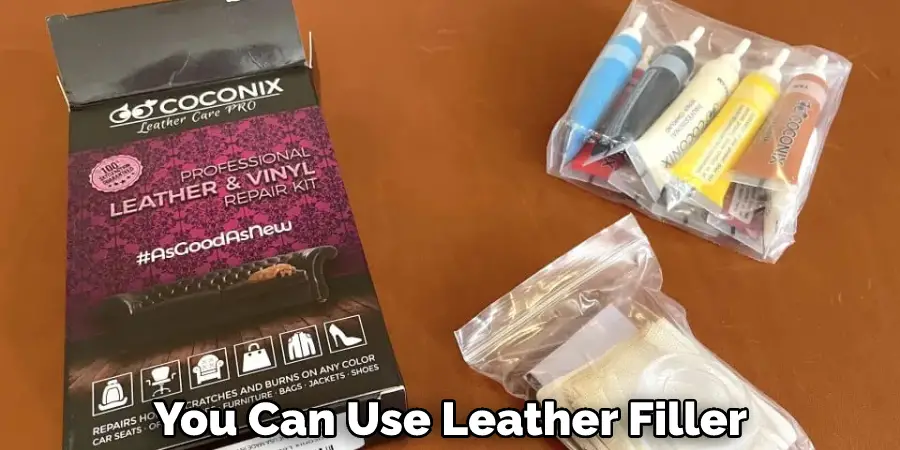
In addition, professionals have the experience and expertise to match the color of the filler to your existing leather so that the repair is nearly invisible. While you may be tempted to try to save money by doing the repair yourself, we believe that the peace of mind and superior results you’ll obtain by hiring a professional are well worth the investment.
How Much Will It Cost if You Hire a Professional?
Leather filler is essential to any leather repair job, so it’s important to ensure you do the job correctly. The cost for a professional to use leather filler can vary depending on the size and complexity of the repair needed.
Generally speaking, you can expect to pay anywhere from $50 to $500 or more for a professional leather repair job. Additionally, some professionals may also charge for the cost of materials and supplies used to complete the repair job. Therefore, asking about all potential costs is important before committing to a particular service provider.
Frequently Asked Questions
Why is My Leather Filler Not Drying?
There could be a few reasons why your leather filler is not drying. The main reason could be that the filler is not being applied evenly. It’s important to use a light hand when filling in cracks and crevices, as too much filler can cause excess bubbling and unevenness. Additionally, make sure the surface you’re working on is completely dry before applying the filler – any moisture will cause the filler to become tacky and difficult to work with. Lastly, keep in mind that leather takes time to dry – typically, it will take about two weeks for the filler to dry fully.
Is Leather Filler Durable?
Leather filler is a durable product that can be used to fill in cracks and crevices in leather products. It is made from a variety of materials, including silicone, latex, and polyurethane, and it is designed to resist water, oil, and other chemicals. Leather filler is typically applied using a spray gun or brush, and it can be painted or finished with a sealant if desired.
The durability of leather filler is a major factor when choosing it for a project. It can withstand wear and tear while providing a seamless finish that looks natural. Additionally, the leather filler is affordable and easy to use, making it an ideal option for projects that require a quick turnaround time.
How Long Should You Leave Filler to Dry?
It is generally safe to leave filler to dry for up to 48 hours, but it is important to check the product every few hours to make sure that it is still wet and does not start to dry out. If the filler begins to dry out, it may become lumpy or difficult to apply, and the outcome of the treatment may be less than desirable. It is also important to note that if the filler dries too quickly, it may cause cracking or other damage to the skin. In general, it is best to err on the side of caution and allow filler to dry for as long as possible before applying it.
Is Leather Filler a Glue?
Leather filler is not a glue, it is a filler that is used to fill holes or cracks in leather. It is a relatively new product, and while there are some similarities between leather filler and traditional glues, there are also some important differences. For example, leather filler is less likely to cause allergic reactions than traditional glues, and it can be used on a wider range of materials than traditional glues. Additionally, leather filler can be blended with other materials to create custom colors and finishes, unlike traditional glues which are limited to single colors.
Conclusion
Leather filler is an incredibly useful material for restoring and repairing leather items. It’s easy to use, and the results can be stunning. But it requires careful preparation and application to achieve the best results – so make sure you follow all the steps above for a successful leather repair project.
With a little bit of effort, you can make your leather items look as good as new. I hope this article has been beneficial in learning how to use leather filler. Make Sure the precautionary measures are followed chronologically.

